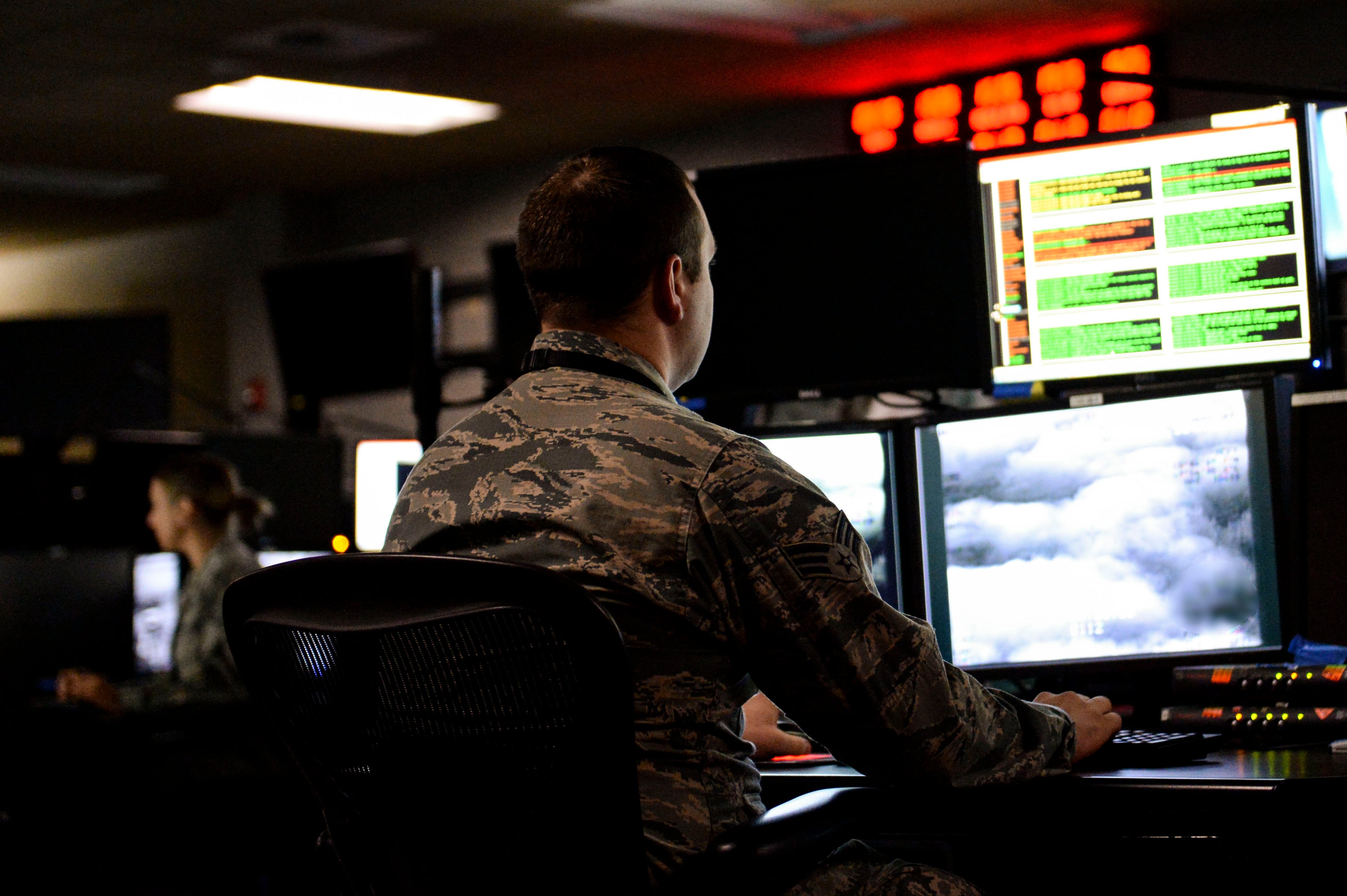NATIONAL HARBOR, Md. — As the Air Force looks to mature its information warfare organization and posture, it is beginning to experiment with how to conduct intelligence, surveillance and reconnaissance in disconnected and disaggregated environments.
Unlike the last 20 years, the U.S. military expects every aspect of its operations ― including the flow of data and information — to be stressed by high-tech adversaries.
“We certainly originally built in a peace time environment to move all that data back to the United States and then push intelligence product forward. We’re not going to have that luxury,” Lt. Gen. Timothy Haugh, commander of 16th Air Force, the service’s information warfare entity, told C4ISRNET in a Sept. 20th interview at the annual Air, Space and Cyber conference hosted by the Air Force Association.
“Our ISR wings, the 480th ISR Wing, the 363rd are doing experiments with how will they operate forward with disconnected systems in our forward ISR activities and then how will we be able to sustain any sort of data flow,” he added. “A lot of that comes back to the compute power that we’re enabling forward.”
In fact, Haugh said, the ISR community was the primary training audience for a recent exercise, as opposed to supporting others during an event.
The ISR elements are also considering how to integrate with the Air Force’s agile combat employment concept, which outlines how to quickly launch and recover platforms away from primary operating bases.
“The area that we want to continue to really accelerate is how do we train an agile combat employment, our expeditionary communicators that are going to deploy with those forces, and then how does our ISR enterprise operate in disconnected environments,” Haugh said. “We need to train [airmen] to be able to now operate in the environments that we’re going to ask them to operate in.
Since its creation, 16th Air Force has organized around a concept of convergence — combining cyber, intelligence, information operations, electromagnetic spectrum and weather capabilities — and taking a problem-centric approach to provide combatant commanders with options.
Haugh said the unit begins by defining the problem they’re trying to solve, such as exposing malign activity.
“What data do we need to be able to answer the question and then from that data is there an outcome we want to achieve,” he said. “Based on that, now you have options. Is that something a combatant commander would like to be able to expose, is it something that an interagency wants to communicate to an ally or is there something in there that is an illegal activity that might lead to a sanction?”
Haugh said he’s pleased with the results his organization is generating and the convergence that’s been achieved, but that speed remains a focus.
“That’s really the area that in the next year, we want to continue to be able to accelerate to be able to produce outcomes,” he said. “That’s really what we get judged on are the outcomes that we produce.”
Over the past two years, 16th Air Force has worked to build a repeatable process within the combatant commands to provide insights to support operations. Now that the process has been created, it will allow them to get faster, Haugh said.
16th Air Force wings “were really a leader in being multidomain problem-centric, and that has really helped us be focused on adversaries and to be able to produce the right intelligence that then identifies those areas we can consider is there something we need to be able to prepare in terms of intelligence report or is there something we’d want to do in the information environment or the cyber domain to be able to be more supportive of our allies or components,” he said.
The convergence and outcomes-based approach 16th Air Force has sought to achieve is also leading to tighter partnerships than the military has enjoyed in recent years.
Haugh said there’s a tight link between the FBI and the Department of Homeland Security’s Cybersecurity and Infrastructure Security Agency when it comes to cybersecurity. If there are threats or vulnerabilities to networks discovered, Haugh said his organization work with those entities to take appropriate action. Other activities include sharing information or intelligence with the State and Treasury departments to be able to thwart misinformation or malign activity.
Haugh also said his unit is working more closely with foreign countries.
“Those partnerships are continuing to grow within cyberspace and those are areas that we see where we’ve got other democratic or partner nations that are feeling the same pressure that we’re feeling from China and Russia and how do we make them more successful and then how can they be a good teammate if we’re going to produce an outcome,” he said.
This includes helping to build the cyber capacity of some international partners or mutually bolstering cyber capabilities.
“What Cyber Command is also asking us to do is work with international partners to grow their capacity so that we can train together, so we can work inside of our range infrastructure to be able to look at if we’re all operating the same weapons system, how do we defend that,” Haugh said. “That’s an area where we work with a number of nations that are just world class in cyberspace. We should be partnering with them. We should be learning from them and, if we have data to help them be successful, we should be giving it to them.”
Mark Pomerleau is a reporter for C4ISRNET, covering information warfare and cyberspace.








